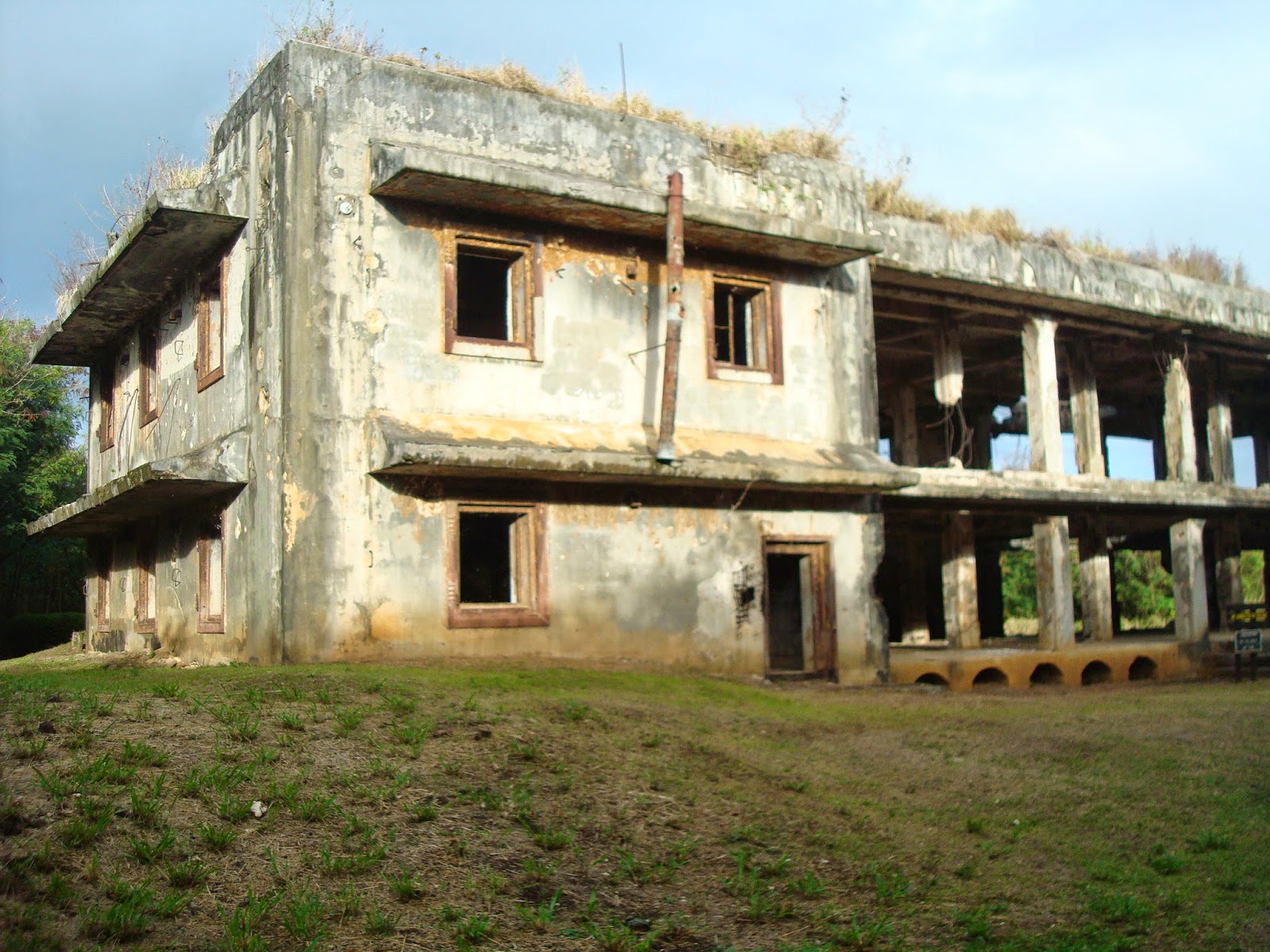"Insurrecto" was the term applied by the Spaniards, and later carried over by the Americans, to Filipino fighters for that nation's independence.
The Marianas were used by Spain as a place of exile for many of those who were captured. Under the Americans, Guam continued to be used for this reason.
The most famous of those deported by the Americans was Apolinario Mabini, the "Brains of the Philippine Revolution." Though a paralytic and already in U.S. custody, the Americans in Manila insisted he be deported because, even while in prison, he was able to secretly communicate with Filipino independence fighters operating in freedom.
Mabini at the Presidio (prison) of Asan. They lived in tents at first, till a wooden building was complete. They were allowed to bring their man servants with them from the Philippines.
Another famous member was Artemio Ricarte. Unlike the others, he never gave in to the demand that he swear an oath of allegiance to the U.S. He eventually lived most of his life in Japan after his deportation.
ARTEMIO RICARTE
PIO DEL PILAR
Another high profile leader exiled to Guam
The New York Times
January 16, 1901
January 16, 1901
LIST OF FILIPINO PRISONERS SENT TO GUAM BY THE U.S.
Arriving January 1901 on the Rosecrans
Maximo Trias, Macario de Ocampo, Julian Gerona, Francisco de los Santos, Apolinario Mabini, Artemio Ricarte, Mariano Llanera, Pio del Pilar, Pablo Ocampo, Maximino Hizon, Esteban Consortes, Lucas Camerino, Pedro Cobarrubias, Mariano Barruga, Hermogenes Plata, Cornelio Requiestas, Fabian Villaruel, Juan Leandro Villarino, Jose Mata, Igmidio de Jesus, Alipio Tecson, Pio Varican, Anastacio Carmona, Lucino Almeida, Simon Tecson, Silvestre Legaspi, Juan Mauricio, Doroteo Espino, Bartolome de la Rosa, Norberto Dimayuga, Jose Buenaventura, Antonio Prisco Reyes, Joaquin Agramon, Eulogio Gonzalez.
The last two on the list were prisoners, but not political ones.
The following were servants to some of these high status men :
Maximiano Clamor, Adel Magcalas, Juan Guan, Faustino de los Santos, Prudencio Mabini, Aquilino Gandeza, Benito de Nuya, Jose Javier, Manuel Rivera, Antonio Bruno, Vicente Antequera, Ezequiel de los Santos, Juan Guasay
Prudencio was the brother of Apolinario Mabini. The prisoner Francisco de los Santos had a son and Pablo Ocampo had a brother-in-law in this group of servants or assistants.
The list does not include some Filipinos brought along as cooks.
There was actually one Spaniard among this group; Villarino, who fought for the Filipino side.
Arriving February 1901 on the Solace
This second group of political prisoners were all from the Ilocos region of northern Luzon.
Roberto Salvante, Marcelo Quintos, Jaime Morales, Pancracio Palting, Leon Flores, Gabino Domingo, Florencio Castro, Inocente Cayetano, Pedro Hernando, Pancracio Adiarte, Faustino Adiarte
TWO of these Filipino exiles remained on Guam. Palting and Flores. Both became prominent members of Guam society before World War II.
Except for these two who stayed on Guam, all the Filipino prisoners were sent back to the Philippines by 1903.
Arriving February 1901 on the Solace
This second group of political prisoners were all from the Ilocos region of northern Luzon.
Roberto Salvante, Marcelo Quintos, Jaime Morales, Pancracio Palting, Leon Flores, Gabino Domingo, Florencio Castro, Inocente Cayetano, Pedro Hernando, Pancracio Adiarte, Faustino Adiarte
TWO of these Filipino exiles remained on Guam. Palting and Flores. Both became prominent members of Guam society before World War II.
Except for these two who stayed on Guam, all the Filipino prisoners were sent back to the Philippines by 1903.
Filipino political prisoners boarding a vessel destined for Guam

































